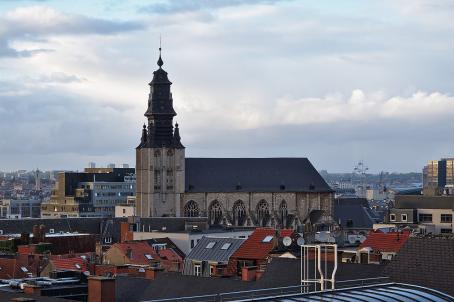Brigittines Church

In 1623, Archduchess Isabella granted the order of Brigitte the right to settle in Brussels. In 1637, the Confrérie des Brigittines, originally from Dendermonde, bought a property on the site of the present rue des Brigittines. In 1663, they built a convent with a chapel, designed by the architect Léon Van Heil in the Italian-Flemish Renaissance style. During the bombardment of 1695, which reduced most of Brussels to ashes, the building suffered little damage. However, in 1784, Joseph II put an end to the religious vocation of the building. Disused as a religious monument from 1783 to 1920, the chapel was put up for public sale. The City of Brussels acquired it two years later and, thanks to a successful restoration, saved it from almost two centuries of setbacks and various uses. A contemporary extension to the chapel was inaugurated in 2007.





